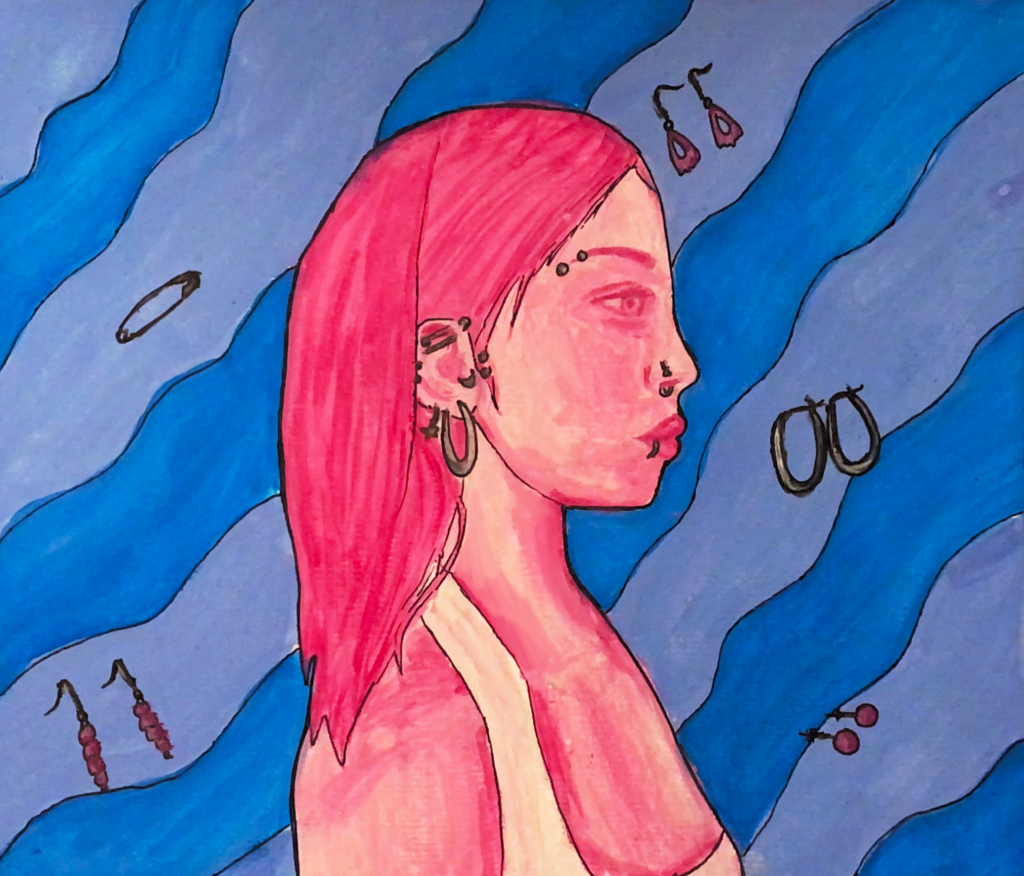According to a research study published in 2006 by the National Institute of Health, 27 percent of teenagers from ages 12-18 have some fashion of piercing. This number is strikingly large; taken 17 years ago shortly before social media’s encroachment upon the lives of teenagers, the data is likely a significant difference from today’s reality. But how much could social media have changed the world of piercings?
“When I see someone with piercings … I usually assume that they have good music taste … and you know, they’re interested in self-expression,” said Kaitlin Blazej Moore, a Berkeley High School senior. For years, permanent alterations to the body such as piercings and tattoos represented a person’s personal style or music taste, usually based on the designs and piercings that coincide with different alternative subcultures and music genres.
Many people may use piercings as a form of self-expression. For Blazej Moore, they can also represent a facet of conformity as face piercings become more fashionable. “It’s definitely trending right now and I don’t know how to feel about it… it almost makes me not want to have my stuff done because I don’t want to … be just following the trend,” Blazej Moore said.
But are piercings trending, or are people experiencing the Baader-Meinhof Phenomenon, an illusion described by Healthline as the false impression that something appears more frequently than it does, often due to a newfound interest in the subject? According to the phenomenon, discovering a new thing leads to subconsciously noticing that thing more often. This could be the case with piercings, leading people to notice the fashion trend more in their day to day lives and perceive them as popular.
Amaya Huston, a BHS senior confirmed that this may be the fact. Huston said, “I don’t really see too many people with any facial piercings other than their nose, so maybe I’m just not aware of that.”
This is an important phenomenon to acknowledge when it comes to teens and self-expression today due to social media’s effect on the mind, as it feeds a constant stream of personalized content. Piercings make this phenomenon especially apparent as they draw attention to judgments teenagers can make based on whether or not something is unique thus interesting, and what it means for something to be in so-called “good-taste.”
“I think the more piercings people have the more bold or spontaneous you seem. I also can assume people’s style by their piercings which is interesting,” said BHS senior Grace Hoover, touching on a similar topic as Blazej Moore. The current stigma surrounding piercings and the “trendiness” around them has been created by the image of piercings as a form of rebellion and a display of one’s “boldness.”
Yet the question remains: why should it matter? And who gets to decide whether something is in good taste?


